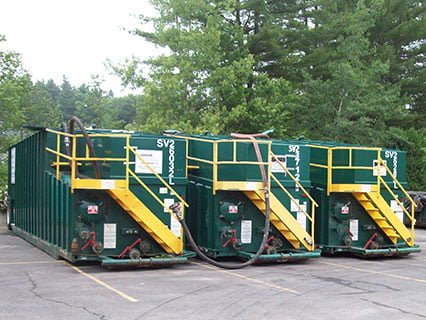 Exposure to benzene and other chemicals in frac and flowback tanks has made headlines recently in several major outlets, including the LA Times1, after NIOSH, a division of the CDC, conducted field studies to assess the hazard. The preliminary findings suggest that workers who manually gauge flowback tanks are exposed to benzene at higher than recommended levels.
Exposure to benzene and other chemicals in frac and flowback tanks has made headlines recently in several major outlets, including the LA Times1, after NIOSH, a division of the CDC, conducted field studies to assess the hazard. The preliminary findings suggest that workers who manually gauge flowback tanks are exposed to benzene at higher than recommended levels.
While the study is careful to point out that the findings are preliminary, it’s also quick to make some recommendations that would dramatically limit this exposure. These are found in the CDC blog2 and include:
The clear intent of the recommendations is set by the first one and is re-enforced throughout – keep workers away from the hatches and limit exposure to the chemicals.
The good news is that these “alternative tank gauging procedures” are already in use on holding tanks for drilling mud, water, oil, condensate, and more. In fact, the absence of tank level sensors on flowback tanks seems odd. With litigation already rampant3 and increasingly restrictive legislation, taking the advice of NIOSH seems prudent.
To effectively limit your exposure to frac fluids in flowback tanks, it’s important that you install accurate and reliable level sensors. You have to be able to trust the measurement or the sensor won’t help much. The goal is to keep the tanks closed, reducing emissions and protecting employees. If you have to be on the tank troubleshooting the sensor much, or are visually verifying the measurement often, you’ll still be exposed.
Carefully consider both the chemical content of the fluid and the environmental changes that will be normal in the tank. Take a few minutes to discuss these with one of our application engineers to find the best solution.
In today’s economic and social climate, reducing risk is an important part of the game – especially during lean times. Using tank level sensors instead of dipsticks keeps employees safe and reduces the risk of illness and lawsuit in a corner of the industry that is already a hotbed of debate and litigation.
Using good tank level gauges will also free up your workforce to execute better in other operations, increasing safety and lowering cost. Manual tank gauging is, especially in this instance, a costly and unnecessary endeavor.
The authors of the NIOSH preliminary report summarize the findings with this statement:
"These findings suggest that benzene exposure can exceed the NIOSH REL and STEL and present an occupational exposure risk during certain flowback work activities. Based on these preliminary studies, primary point sources of worker exposures to hydrocarbon vapor emissions are opening thief hatches and gauging tanks; additional exposures may occur due to fugitive emissions from equipment in other areas in the flowback process (e.g., chokes, separators, piping, and valves), particularly while performing maintenance on these items. The NIOSH research found that airborne concentrations of hydrocarbons, in general, and benzene, specifically, varied considerably during flowback and can be unpredictable, indicating that a conservative approach to protecting workers from exposure is warranted. Hydrocarbon emissions during flowback operations also showed the potential to generate flammable and explosive concentrations depending on time and where measurements were made, and the volume of hydrocarbon emissions produced."4
Their report and somewhat troubling statement can be seen as writing on the wall. Don’t wait to install proven tank level sensors built specifically for the upstream oil and gas industry. You’ll protect your employees and get ahead of the curve on safety regulation and another potential wave of litigation.
Contact us with any questions you may have about tank level sensors or their application in your specific scenario.
top photo credit: Massachusetts Dept. of Environmental Protection via flickr cc
Sources: